The tribe has spoken. What they want is the flexibility of remote, or at least hybrid, working options. But how do you source, screen, and build a remote team that manages to stay connected and understand the value of collaboration, active participation, and the need to constantly build relationships?
Considering that 68% of Americans would prefer a fully remote work model, this is something that companies need to tackle now if they want to attract and retain top talent.
Let’s get you up to speed.
TL;DR — Key Takeaways
- What’s the status of remote working today? It’s no longer a foreign concept, that’s for sure. Today, most new hires are looking for hybrid or remote work opportunities that offer them the right balance.
- What’s the difference between virtual and remote teams? In essence, they’re managed differently. Virtual teams only work together for a particular task or project and then go their separate ways.
- What makes a good remote team? An effective remote team works well together because of their skills, like good communication skills, work ethic, and having the right tools that simplify collaboration, like modern video conferencing software or Google Docs.
- How do you build a kick-ass remote team? Along with focusing on attracting the right candidates with a user-friendly careers page, job postings, and remote employee benefits, companies should also focus on their onboarding process and boosting remote team employee engagement through virtual team-building activities, for instance.
- Hiring is hard enough – but hiring remote talent is another ball game. From candidate verification to an asynchronous hiring process (no phone calls, right?), companies need to adapt to a different recruitment model. At Toggl, we’ve been honing the art of remote hiring and assembling a distributed team since 2014. After a few costly failures to hire quality remote workers, we’ve built Toggl Hire — an all-in-one screening, assessing, and hiring platform!
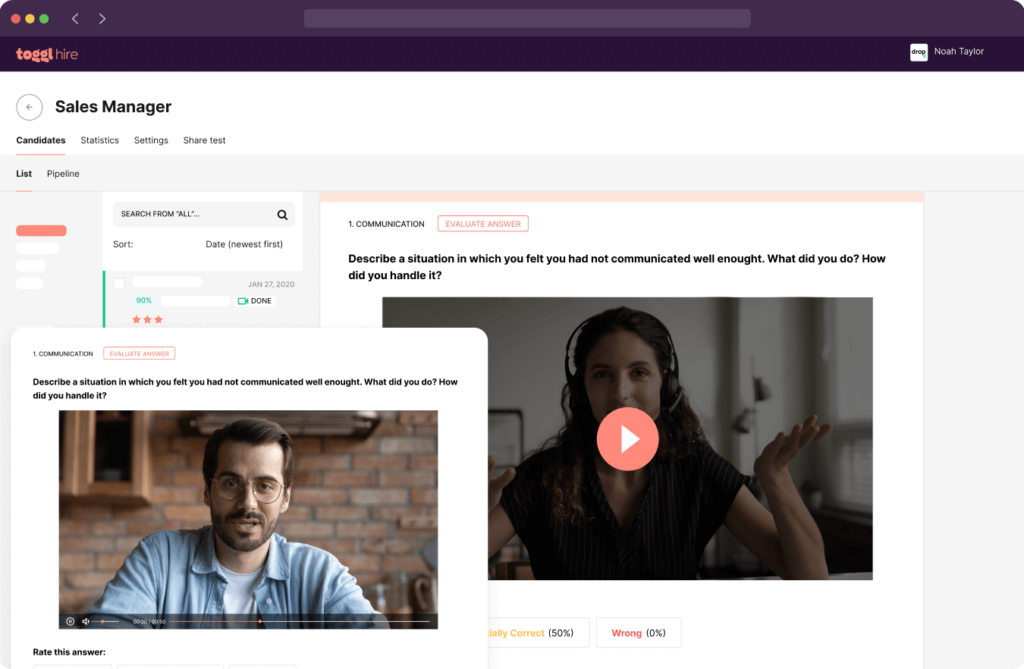
The evolving world of remote work
Five years ago, remote work was definitely not a typical thing. But it sure is now. And it’s here to stay. In fact, researchers predict that by 2025, 36 million Americans will be working remotely. That’s a 417% increase from pre-pandemic times!
In early 2020, employers were forced to shift to work-from-home models to keep their businesses ticking over. But lately, many are trying to get their workers back into the office. What’s driving this thinking?
Well, 60% of managers still worry that their employees are less productive when working remotely. As a result, approximately 37% of companies have started using (or increased the use of) software to track employee activity in the past year.
On the other side of the coin, 94% of employees say that their personal level of productivity is the same or higher when working remotely. So, does this mean businesses need to continue offering remote or at least hybrid work flexibility? Oh yes.
Preference for remote work complicates employer decisions as they will continue to face a very challenging hiring market with demand for new workers stronger than the number of job hunters. When jobs are plentiful and current, or potential employees can efficiently work elsewhere, job hunters can be very selective. That means employees still drive the car.
Source
To manage the expectations of today’s workforce, organizations need to build remote teams that work!
What’s the difference between virtual and remote teams?
The difference between virtual and remote teams is that they are managed differently. A virtual team will answer to different bosses, while a remote team typically falls under the same manager.
More specifically, a virtual team is usually a group of specialists (with different areas of expertise) that work together on a particular task or project. They have different reporting lines and go their separate ways once the task or project is finished—for example, an emergency task force.
Remote teams are similar in some ways. They also work together on projects but report to the same manager. Typically, they all fall under the same broad area of expertise but have different individual skills — for example, a remote digital marketing team.
So, what makes a good remote team?
For a remote team to be effective and productive, they need to work smart — together (even though they may be far apart!). That means they need to embrace qualities, skills, and tools such as the following.
Excellent communication skills
In a distributed team, colleagues need to communicate clearly and proactively to ensure smooth collaboration and task or workflow handovers. This is also an important skill that helps team members to stay connected.
Accountability and ownership
For everything to run smoothly, highly functioning remote colleagues are dependable and can be relied on to deliver consistent, quality work by taking ownership of their tasks in full.
Problem-solving
A clear head that gets to the root of problems quickly and calmly goes a long way toward removing blockers and maintaining high levels of productivity in a remote team environment.
Emotional intelligence
EQ helps teams to be in tune with how their emotions affect others and understand their colleagues’ strengths and weaknesses and how best to work with them. Plus, the patience and sense of humor to pull through tough times together!
Discover why your next candidates need meta-skills like emotional intelligence to thrive in a remote team. 👇
Your tech stack
The best online collaboration tools, from virtual whiteboarding with Miro and Slack for team collaboration to Notion for documentation, and Toggl Hire for asynchronous hiring, remote teams run more efficiently when they’re equipped with the right tools and software.
🔥 Want to learn more about hiring remotely? We literally wrote a book about remote recruitment — enjoy!
10 Steps to building a remote team that’s extraordinary
Now that you’re done with the entrée, it’s time to dive into the main course of remote working and learn how to build a remote team that works together to cook up a storm! Take your own remote coworking team from ordinary to extraordinary by y following these ten steps.
1. Redefine your company culture
Creating an authentic company culture is a big undertaking. It’s not just a tick-box exercise (at least, it shouldn’t be). Once all the stakeholders, including HR and execs, have pinned this down and codified it in an employee handbook, for example, it’s something that needs to be adopted by the whole company.
Company culture is also something that evolves as the company grows and changes, so you may need to redefine it from time to time. And this is important, as it’s unrealistic to expect employees, especially those working remotely, to adopt a wishy-washy company culture.
It’s definitely easier for those working in the office or with hybrid flexibility to immerse themselves in the culture since they have direct contact with their colleagues and can attend in-office or in-person events.
It can be more difficult for remote teams to adopt or feel part of the company culture. Managers with remote teams need to be aware of this at all times and take extra steps to make them feel included, such as virtual team-building activities. We’ll cover that in more detail below.
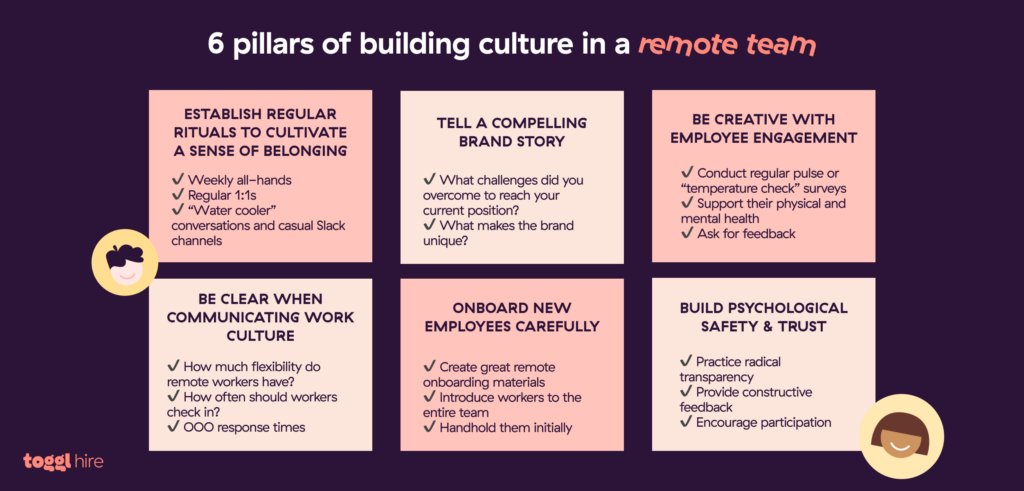
🔥 Did you know? 88% of job seekers believe good company culture is vital for success. Read more on how to hire for cultural fit.
2. Update your careers page
Once your company culture has been reviewed and updated, if necessary, these details should be added to your website, especially on your company’s careers page.
After checking out your company website in general, your careers page is the next stop for prospective remote workers. That’s why your careers page should include info like:
- Your company culture and values
- An overview of what your business does and a brief history
- Videos and photos of employees
- Employee testimonials
- The perks and benefits (especially those that apply to remote team members)
- A virtual tour
Done right, your careers page can help speed up the hiring process, reduce hiring costs, and boost your employer brand.
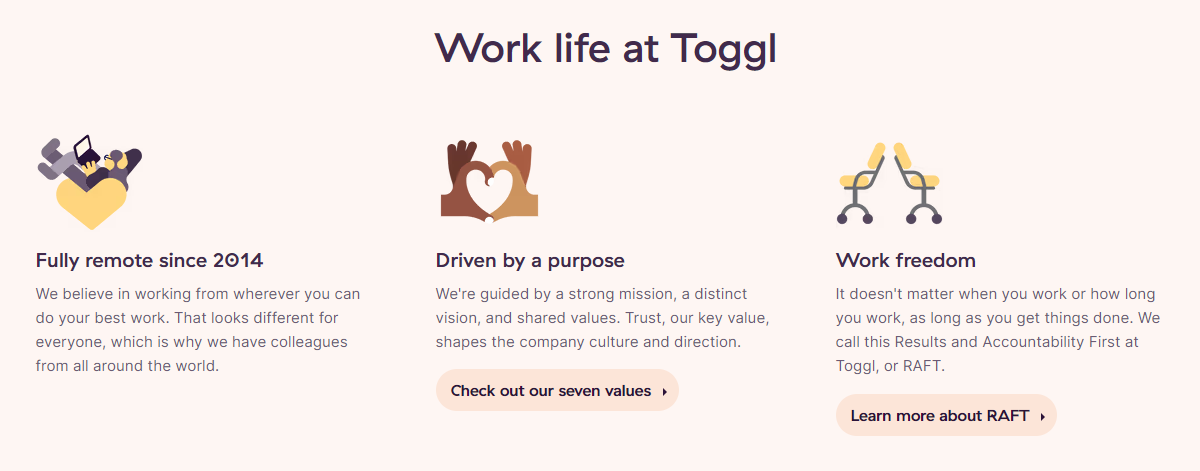
3. Get ready to promote your remote roles
Once your careers page looks spiffy, you can start planning how to spread the word about your open remote roles. Here are a few general things to remember when advertising remote roles:
- Create an engaging job description that will entice remote workers to apply. Ensure it’s performance-based and that it lists what success entails in the role.
- Make sure it’s clear that the role is remote. For some positions, this means remote US only or remote only within a certain time zone. You need to lay out all the key info, such as how many hours per day/week and preferred time zones.
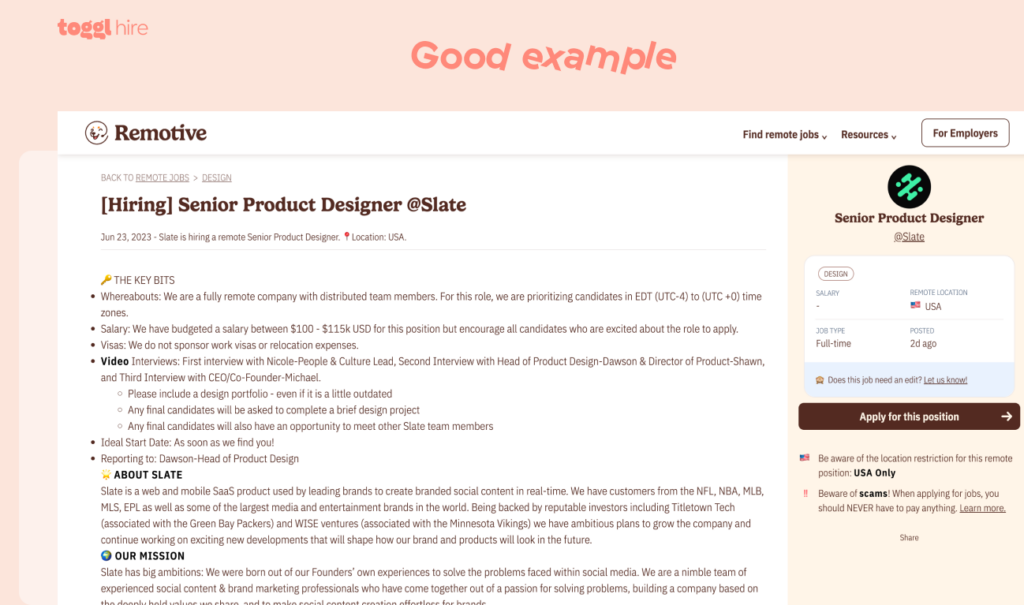
4. Post on job boards
The majority of candidates for your remote job will spot your ad on job boards or career websites, such as Indeed, ZipRecruiter, LinkedIn, and CareerBuilder.
You can also target:
- Websites that focus on remote work, such as Remote.co, We Work Remotely, FlexJobs, Working Nomads, and Remotive.com
- Specialized platforms, such as Mashable for web developers and Problogger for writers
- Freelance websites, such as Upwork, Fiverr, and Jooble
If it’s not a remote-specific job website, remember to clearly stipulate that it’s a remote role.
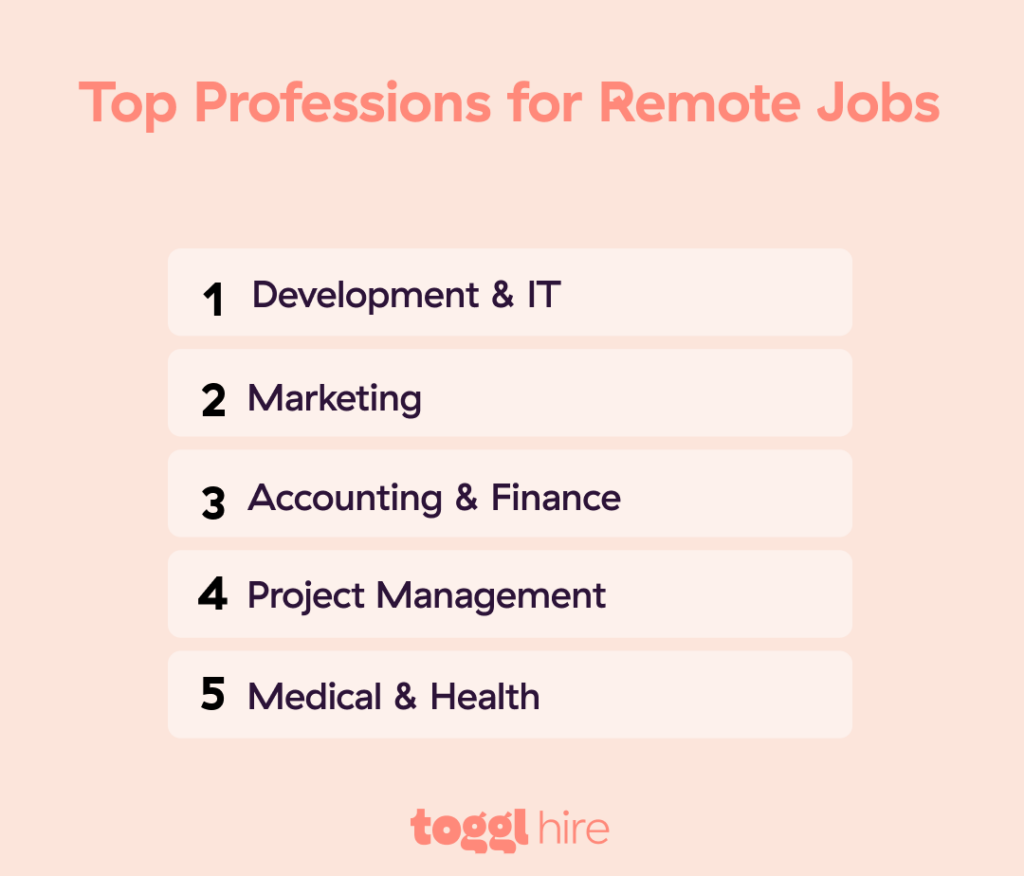
5. Use social media recruiting
Advertising open roles on social media is an important part of a company’s talent acquisition strategy. And it’s just as important for open roles on a remote team. Social media recruiting can help you get the word out to a bigger candidate pool and may even attract passive candidates.
6. Assess their skills
Before making any hiring decisions, it’s crucial to see whether your applicant ticks all the boxes for the position. Instead of relying solely on the info remote workers share on their CVs, why not try a skill-first hiring approach? That way, you find out if they’ve really got the skills and capabilities to succeed in a remote team.
A good solution should enable your team to test their hard skills, like coding and email marketing, and soft skills, like productivity, attention to detail, and communication skills.
Toggl Hire offers a range of skills tests that are quick and easy to set up. Your team can automate the assessment process to pick out the top candidates for your remote team in one day.
- You can test by role, such as Machine Learning Engineer
- Or test by skill, such as problem-solving
- We even offer a remote-working skills test that covers all the capabilities that a good remote team needs
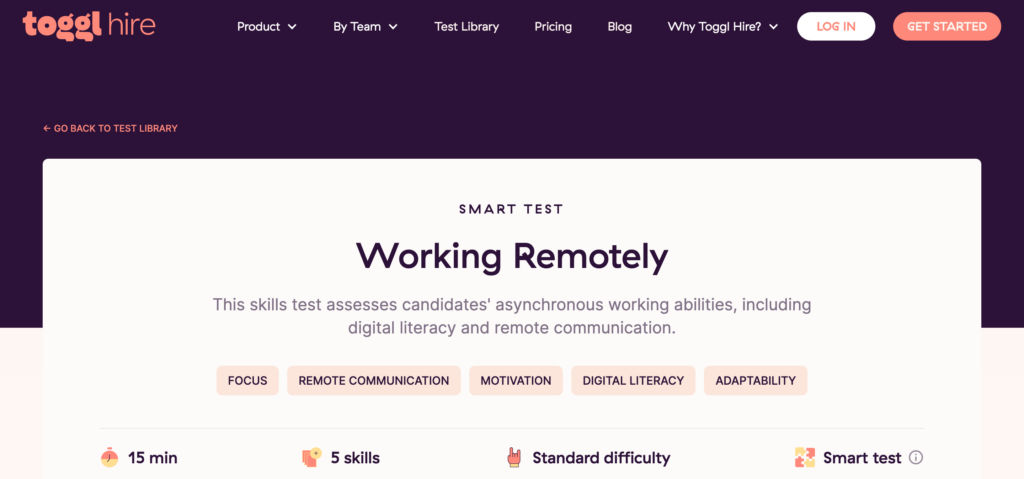
🔥 Did you know? The best thing about adopting a test-first hiring approach is that it feels more like a game than an arduous application process for candidates. Most of our current employees weren’t even actively looking for a job when they took our skills quiz — it was just a bit of fun to ‘check their skill level.’

7. Homework assignments
Once you’ve narrowed down your selection to the top candidates you know will make excellent remote team members, you can provide the opportunity for the best to shine with a homework assignment.
A homework assignment is a task given to a candidate during the interview process. It tests whether they have the right skills for a role. Usually, they take about an hour or two to complete and have a specific deadline. And it may even be a paid assignment (this is preferable to boost the candidate experience).
Homework assignments are a great way for remote team members to get a glimpse into their day-to-day duties and for the business to check whether they’ve really got the best candidate for the job!
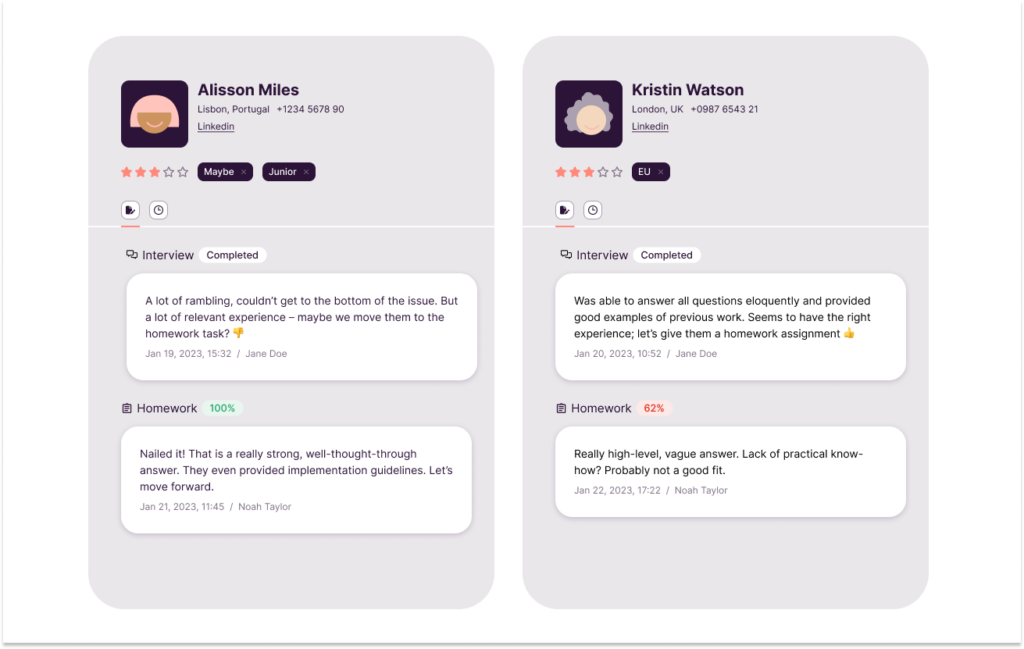
8. Provide proper onboarding
Just because you don’t have an office doesn’t mean new employees shouldn’t get a proper onboarding experience. You may not be able to show them to their desk or how to operate the office coffee machine, but you can still ensure that they’re introduced to their role and work environment so they can quickly feel at home with a remote onboarding process.
For remote workers, onboarding is essential to familiarize themselves with team culture and the way your company functions. This is even more crucial if this is your new hire’s first time working remotely.
What does managing remote teams look like regarding the onboarding experience?
Here are a few tips to help get them settled in:
- Set up one or a few meet-and-greet opportunities with their coworkers. For hybrid workers, this could be a day in the office for face-to-face hellos. Alternatively, a video call or a virtual team huddle before they start can help them learn more about their colleagues, chat about any common interests, and start building connections.
- Provide detailed onboarding documentation. Consider sharing comprehensive onboarding documentation that includes an employee handbook, a list of key contacts, a list of the tools or tech stack they’ll be using, and a basic plan for their first week that includes onboarding training, for instance. Consider personalizing the onboarding docs, especially for remote workers, so they feel valued!
At Toggl Hire, we get all the new hires to prepare a quiz about themselves and share it with the rest of the team. Then we get on a team call and review the results together, with live commentary from each author. This creates an opportunity to delve a little deeper, discover shared passions or hobbies and make the onboarding experience more memorable for everyone.
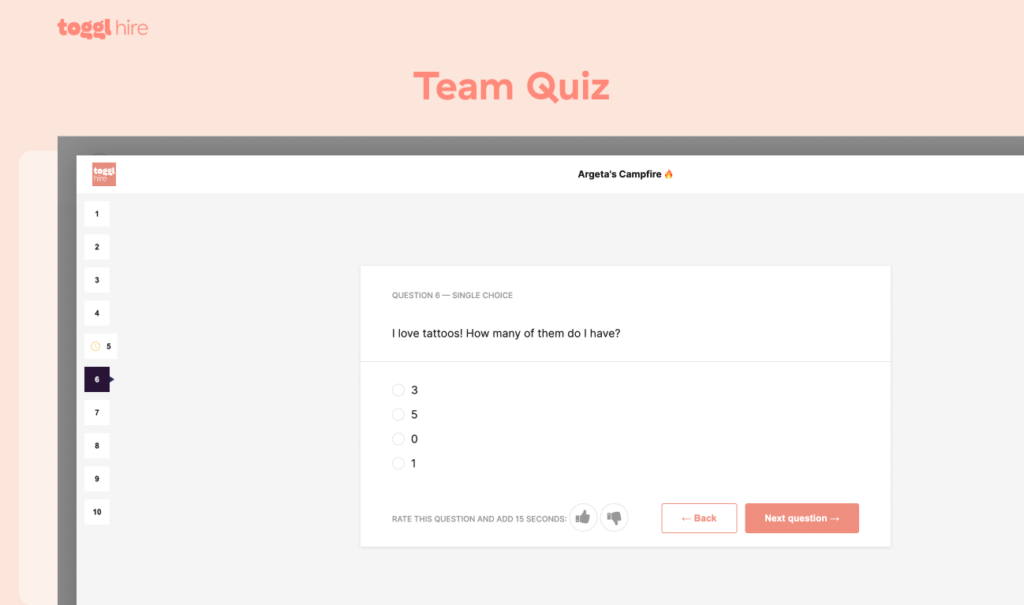
- Share clear expectations with the remote team. Introduce your new workers to their main tasks, deadlines, responsibilities, and team goals. You can do this by using a project management app, such as Toggl Plan.
- Assign the remote newbie a buddy or mentor. This can help them feel a sense of psychological safety and have a point of contact for all the questions employees have when they start.
The top 3 companies that offer the most work-from-anywhere job listings:
1. Wikimedia Foundation: a nonprofit organization dedicated to fostering the growth, development, and distribution of free, multilingual content
2. Protocol Labs: a software company that creates systems and tools to address technical web challenges and optimize the user experience
3. Kraken: a digital asset platform that offers spot trading, margin trading, parachain auctions, staking, regulated derivatives, index service, and a custodial NFT marketplace
9. Virtual team building
Remote team building activities are possibly even more essential than team building for those who work from the office or visit the office occasionally. They help remote and virtual teams feel part of the organization — or, in the case of a fully remote company, help everybody feel connected.
These are not the same as regular team meetings but rather fun activities like virtual happy hours, a virtual book club, or Friday afternoon virtual pizza parties.
10. Celebrate small and big wins
With the crazy pace of work today and remote teams often scattered across the world, it can be easy to let milestones or team wins go by unnoticed or un-celebrated. However, when managing remote teams, it’s important to stop and celebrate milestones, like finishing a totally manic work sprint or updating a key company webpage.
Celebrate the big wins, too, like a company rebranding or launching a new product. This is an important factor in helping teams, especially remote teams, feel their contribution is valued, and it can give them that second wind they need to keep producing stellar work.
Consider praising the remote team member or the entire team on your team Slack channel, on team video calls, or even by sending them a small gift!
Bonus tips
And finally, here are a few bonus tips for those already in gear with building remote teams:
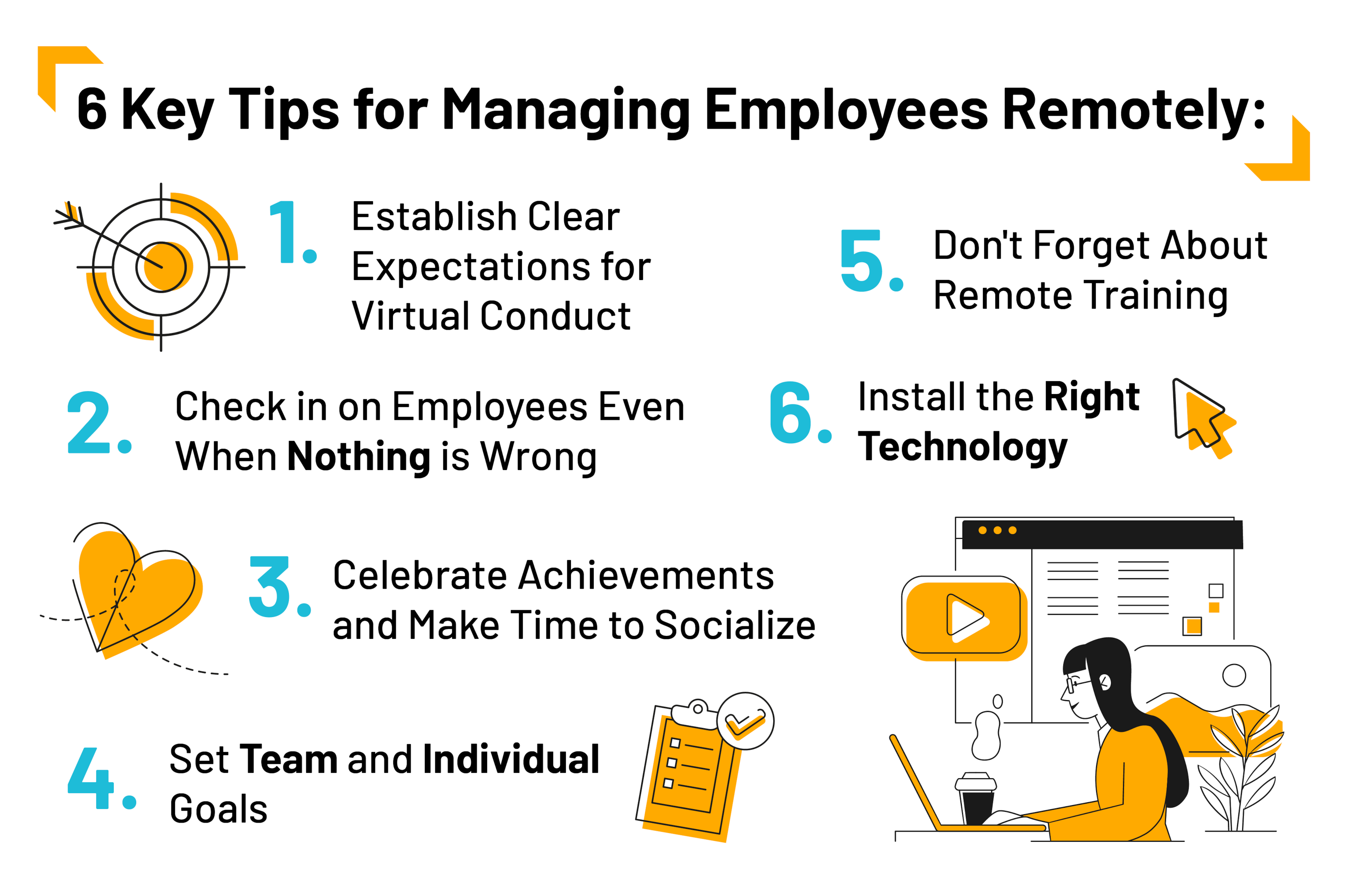
Build a great team of remote workers today
Building and managing remote teams (at least the kinds you’d want to work with) is essential in today’s virtual world of work. Begin by having all your ducks in a row with a user-friendly careers page, job posting, and a comprehensive onboarding process to hook the right remote workers.
With all that in place, you can focus on screening and assessing candidates to help the best-fit applicants stand out. Toggl Hire’s skills assessment platform is the perfect tool to automate and streamline your hiring process. Start building a seamless hiring workflow for your remote teams today.

Juste loves investigating through writing. A copywriter by trade, she spent the last ten years in startups, telling stories and building marketing teams. She works at Toggl Hire and writes about how businesses can recruit really great people.












